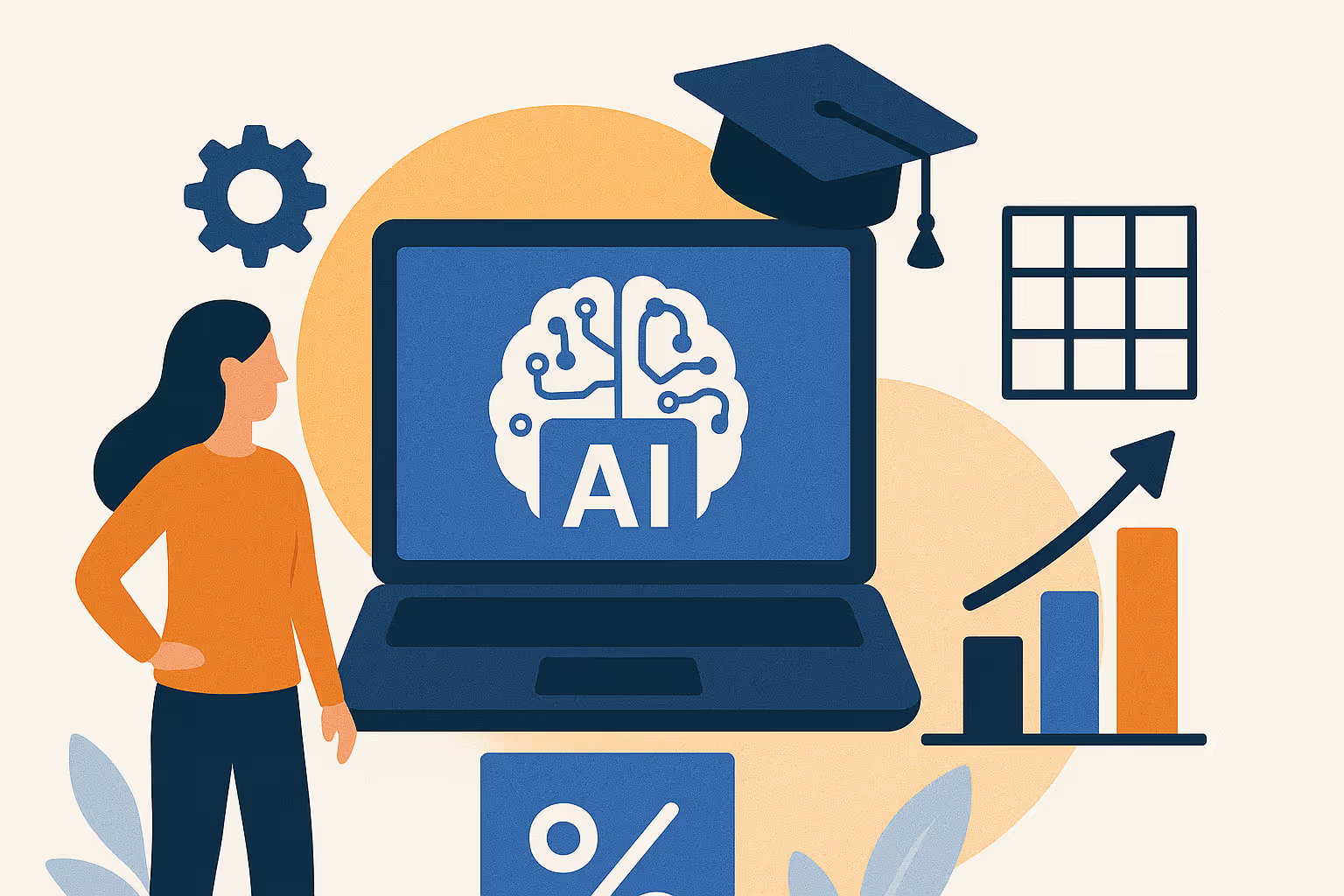About the Blog
In an era where digital presence can make or break enrollment goals, colleges and universities need tailored strategies to stand out. Here’s how to leverage the latest practices to effectively connect with students.
Marketing has become essential for higher education, especially in today’s digital world, where students expect quick, personalized, and engaging interactions online. Colleges and universities need effective marketing not just to attract new students but also to build strong reputations, keep current students engaged, and stand out in a competitive landscape.
In the following sections, we’ll look at key strategies that work best for higher ed, like using paid social ads, creating engaging content, and strategized SEO approaches; just to name a few. By focusing on these areas, institutions can better connect with students and keep up with the rapidly changing digital environment.
Effective Higher Education Marketing Strategies
For enhancing marketing in higher education, a balanced approach that combines traditional methods, like events and print materials, with digital tools ensures institutions can reach a wider audience and build meaningful connections with prospective students.
Content marketing and storytelling
Content marketing is key to helping prospective students see what makes a college or university special, and storytelling plays a powerful role in this. When schools share real stories—like a video of a day in the life of a student or a podcast about alumni who turned their degree into a successful career—it helps students picture themselves on campus and feel connected before they even apply.
Engaging content like blogs that dive into student experiences, videos of campus events, and behind-the-scenes looks at academic programs can bring campus life to prospective students in a memorable way, making them feel like they’re already part of the community. For example, think of the difference between reading a list of degree requirements and hearing directly from a student about how a specific course sparked their passion and led to an internship; it’s the personal touch that makes content marketing so impactful.
SEO and content optimization
Keyword research, on-page SEO, and regularly updating content are essential for making sure prospective students can easily find an institution’s website.
Using relevant keywords and phrases that students might search for—like "best college for business majors" or "top nursing programs"—is the first step in getting content noticed, while on-page SEO, like optimizing titles, headers, and descriptions, helps make the content clear and organized for search engines. Regularly refreshing website content, like updating program details and adding new student success stories, keeps a school’s site high in search rankings and lets prospective students find the latest information. A best practice example would be a university ensuring its business program page includes keywords like "affordable MBA" and updating with recent alumni achievements or new course offerings to remain relevant and engaging.
Personalized email marketing campaigns
Personalized email marketing is a great way for colleges and universities to connect more meaningfully with their audiences, boosting engagement and making each reader feel valued.
By segmenting email lists—such as creating separate lists for prospective students, current students, and alumni—schools can send tailored messages that speak directly to each group’s interests and needs. For example, prospective students might receive emails highlighting campus tours and application tips, while current students could get updates on campus events or study resources, and alumni might be interested in networking opportunities or donation drives.
Personal touches like using the recipient’s name, referencing their program, or sharing news relevant to their interests can make email communication feel personalized and thoughtful.
Social media engagement
Social media is a vital tool for reaching and connecting with students, offering colleges and universities a direct way to engage with both prospective and current students where they’re already active.
Hosting live events, like virtual campus tours or student-led Q&A sessions, helps create real-time interactions that allow students to feel connected to the campus experience. Encouraging user-generated content—such as sharing students’ photos from campus or reposting alumni achievements—builds a sense of community and shows authentic glimpses of student life, making a school’s social media presence more relatable and engaging.
Search engine marketing (SEM) and paid social ads
SEM (Search Engine Marketing) and paid social ads are valuable for boosting a college’s visibility, complementing organic marketing efforts by reaching a broader audience more quickly.
With these tools, schools can target specific demographics—like high school seniors interested in STEM or international students looking for business programs—ensuring their ads reach the right people at the right time. Retargeting strategies, such as showing ads to prospective students who’ve previously visited the website or engaged with social content, help keep the college top-of-mind, reminding students of the programs and campus experiences that caught their interest.
Virtual campus tours and events
Virtual campus tours have become essential for attracting prospective students, offering them a way to explore a college's campus and culture from anywhere in the world.
These tours give a real sense of the campus layout, dorm life, and facilities, making it easier for students to imagine themselves at the school. Engaging virtual events, like live Q&A sessions with current students, program-specific tours led by professors, or interactive club showcases, can further enhance this experience by showcasing both academics and student life, helping prospective students feel truly connected and excited about what the college has to offer.
Why Higher Education Marketing Matters
Effective marketing plays a crucial role in student engagement and building a strong brand reputation, helping colleges and universities stand out in an increasingly competitive landscape.
Through thoughtful and targeted marketing efforts, institutions can not only attract new students but also strengthen relationships with current students and alumni, creating a sense of community and belonging. When students see their college actively highlighting campus achievements, student success stories, and program innovations, it enhances their pride and connection to the school. Ultimately, effective marketing helps position the institution as a reputable and appealing choice, influencing both prospective and current students’ perceptions.
Marketing today, however, looks very different from traditional methods of the past. While traditional marketing methods—like printed brochures, college fairs, and direct mail—are still valuable, they’re no longer enough to reach today’s digitally savvy students. Digital marketing brings in powerful tools, like social media engagement, email marketing, and search engine visibility, allowing institutions to connect with students where they’re already spending their time.
Unlike traditional marketing, digital strategies allow for instant engagement, personalized messaging, and continuous updates, making it easier for schools to stay relevant and responsive to student needs. Combining both approaches, however, provides the balance needed to build a lasting, credible reputation while still adapting to students’ digital expectations.
Higher Education Marketing Challenges
Institutions face several challenges in their marketing efforts, including intense competition for student enrollment, evolving student expectations, and limited budgets.
With more schools vying for a smaller pool of prospective students, standing out requires a strategic, adaptable approach that meets students’ desire for personalized, digital-first experiences. Budget constraints add further pressure, often limiting resources for marketing initiatives, but colleges can overcome this by prioritizing high-impact, cost-effective tactics like targeted social media campaigns, virtual events, and authentic student-driven content. By focusing on what makes their programs unique and using digital channels creatively, institutions can more effectively reach prospective students without overspending.
Conclusion
In today’s changing higher education landscape, smart marketing is essential for attracting and keeping students engaged. Key strategies include balancing traditional and digital marketing, using personalized email and content, connecting with students through social media, and offering tools like paid ads and virtual tours to reach today’s tech-savvy students. Challenges like strong competition, changing student needs, and tight budgets can be managed by focusing on strategies that highlight what makes each school unique.
With the digital world transforming how schools connect with students, adopting new strategies strengthens relationships with both prospective and current students. Be sure to check out the Confessions of a Higher Ed CMO podcast, hosted by Jaime Hunt, to learn how other institutions and leaders are evolving their marketing efforts.
Frequently Asked Questions
What are some ways to measure student satisfaction with marketing and outreach efforts?
Student satisfaction with marketing and outreach efforts can be measured through surveys, feedback forms, and engagement metrics like email open rates, social media interactions, and website visits. Tracking enrollment rates and event attendance can also reveal how well marketing resonates with prospective and current students.










